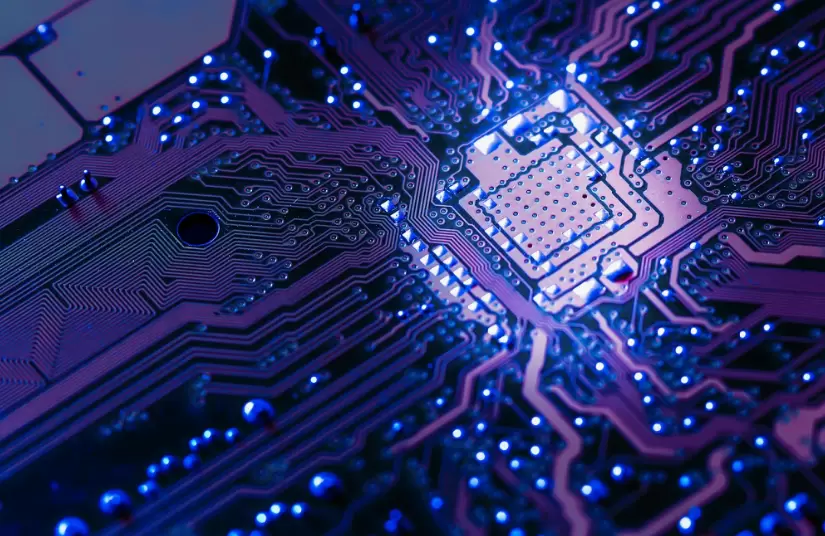Technology seems to take on an almost mystical quality with its constant stream of novel innovations. Peering past flashy designs and slick marketing reveals systems grounded in established scientific principles.
This in depth guide unravels engineering fundamentals across scales invisible to the naked eye that empower even the most sophisticated technologies.
Technology works by applying scientific principles through innovative design to create useful tools, systems and processes that solve problems and assist humankind.
The Nanoscopic Building Blocks of Modern Electronics:
All digital devices rely on circuits fabricated onto silicon chips mere millimeters wide yet containing billions of minuscule components.
At the heart of these microchips lie transistors, simple on/off switches that represent the binary digits processors interpret as code.
Transistors lie at the nanoscale, often measured in mere nanometers comparable to just a few atoms wide. Manufacturers craft them using wafers of highly purified monocrystalline silicon enriched with trace impurities to modify electronic properties. Specialized furnaces precisely “dope” wafers with electron donating or accepting atoms to define n type and p type materials.
Through photolithography, ultraviolet light transfers circuit patterns onto photoresist chemicals applied to doped silicon slices. Etching chemicals then carve exposed areas down to the crystalline substrate. After stripping remaining resists, electrodes inject controlled electric fields to exploit silicon’s conductivity variations. With gate, source and drain terminals positioned mere billionths of meters apart, subtle voltage changes toggle trillions of tinier transistors.
Beyond logic switches, integrated circuits require passive elements laid during lithography. Capacitors store charges, resistors moderate signals, and interconnects route electrical pathways.
Compact arrangements enable jamming over 10 billion components into areas smaller than a fingernail yet interconnected through circuit boards and packages.
The meticulous precision inducing silicon’s quantum properties gives rise to computational fabric underpinning smartphones, supercomputers, and beyond.
Technology Works: Binary Logic and the Digital Abstraction:
Miraculously, vast processing prowess emerges from judicious arrangements of simple switches performing binary logic operations.
Transistors positioned using photolithography translate voltage levels into ‘high’ or ‘low’ states representing the binary digits 1 and 0.
By imposing electric fields at logic gates like AND, OR and NOT, on/off transistors combine input patterns to yield output signals according to Boolean algebra.
Logic circuits capable of serially adding or multiplying numbers merely manipulate flows guided through carefully etched arrangements.
Over time, refining lithography has exponentially increased the number of gates integrated within ever smaller areas of silicon real estate.
Where whole rooms once housed mainframes containing a few thousand gates, today’s smartphones integrate billions of them in chips scarcely visible.
This scaling enabled following Moore’s Law projections that transistor densities double every two years or so. As components approach sizes measured by statistical quantum mechanics rather than reliable classical properties, future generations may require novel engineering approaches.
Fundamentally though, any processor is simply an interconnected network of logic gates interpreting on/off patterns as instructions specifying algorithms stored in binary format.
Through precise atomic level control of electrons, human designs are carried out via sheer numbers of logical calculations per second.
Regardless of platform, all digital technologies derive capabilities from this foundational principle of binary logic.
Sensor and Display Systems: Interfacing with the Physical World:
Technology works through sensors that detect real world inputs which are then processed and displayed on screens so that users can interact with digital systems in intuitive ways.
Of course, digital circuits amounting to fast calculations alone serve little practical purpose. Technologies succeed by processing real world inputs and controlling physical outputs interacting with users.
Carefully engineered interfaces translate between analog and binary domains.
Common sensors like microphones, cameras and touchscreens convert ambient properties into digital signals representing pressure, light intensity or motion.
Micro electromechanical systems (MEMS) miniaturize transducers to unprecedented scales, enabling sensing to permeate throughout environments.
Meanwhile, actuators drive outputs by moving mechanical or optical elements according to code execution.
Displays convert binary pictures into pixels of precisely tuned wavelengths. Liquid crystals modulate polarization in LCDs while OLEDs utilize electroluminescence of organic compounds.
Soundcards stimulate speakers with rapidly alternating current to eject acoustic waves conveying encoded audio. And motors controlled via signals precisely maneuver real world components like robotic arms.
Well designed input output systems deliver frictionless user experiences masking engineering subtleties. Touch based interfaces for example minimize indirect controls through direct manipulation of digital contents. Software algorithms polish rough sensor data into smooth motions enhancing intuitiveness.
Ultimately, regardless of application, all technologies bridge between quantitative representations within circuits and qualitative properties we perceive through senses.
Complex Systems Emerging from Fundamental Principles:
With familiarity of microchip internals, binary logic, and input output systems, advanced machinery operating “by magic” reveals scientific roots.
Aerospace technologies leverage microprocessors for avionics, renewable energy harnesses electron flows, and medicine applies Nano sensors detecting biomarkers.
In each domain, capabilities stem from arrangements of logic gates, error correcting codes, and carefully engineered interfaces.
Emerging realms like artificial intelligence similarly stand upon established infrastructure, training algorithms on hardware following known mechanics.
Quantum computers aim accelerating simulations by coaxing particles into superpositions, but function through programmable qubit interlinkages nonetheless.
Technologies augmented or virtualize our senses invariably channel stimuli through digital workflows engineered down to microscopic scales.
Futurist visions like seamless brain computer interfaces or interplanetary infrastructure will undoubtedly emerge from presently unconceived designs.
Yet ultimately, every innovation no matter how “magical” relies on advancing techniques refining component arrangements manipulating physical laws established since antiquity.
With perspective on fundamental engineering principles beneath exotic capabilities, technology’s frontiers seem excitingly surmountable through continued dedication of scientific inquisition.
In demystifying technology’s inner workings, appreciation grows for ingenuity across generations creating our world.
Basic comprehension cultivates optimism towards responsibly meeting society’s needs, while motivating youth to steward further progress.
With patience and understanding how diverse systems connect to roots in established science, technological potentials come into clearer focus and limitations seem less obscure.
Humanity’s tools evolve rapidly, yet their foundations remain grounded in nature’s constants humanity aims deciphering through the scientific method.
FAQ
Q. How does technology work?
A. Encoding information into binary code.
Q. What is the purpose of technology?
A. To meet a human need or solve a human problem.
Q. How does technology help us?
A. Increased efficiency.
Q. What is the concept of technology?
A. Technology is the use of scientific knowledge for practical purposes or applications.
Q. How does technology start?
A. By chipping away at rocks to make shapes, humans were able to create the earliest axes, hammers, knives, and arrowheads.
Conclusion:
It’s evident that for all their seeming complexity, modern technologies fundamentally operate according to well established scientific principles refined over lifetimes of diligent engineering.
From atoms arranged on silicon wafers through circuit designs and algorithms, innovations emerge through incremental yet relentless advances building upon discoveries dating back centuries.
By recognizing technologies’ elemental roots, their mysterious qualities recede while potential for inventive solutions matching humanity’s scale emerges with inspiring clarity.
May an enlightened grasp of fundamentals empower responsible progress addressing our species’ most testing issues through the rising generations.













